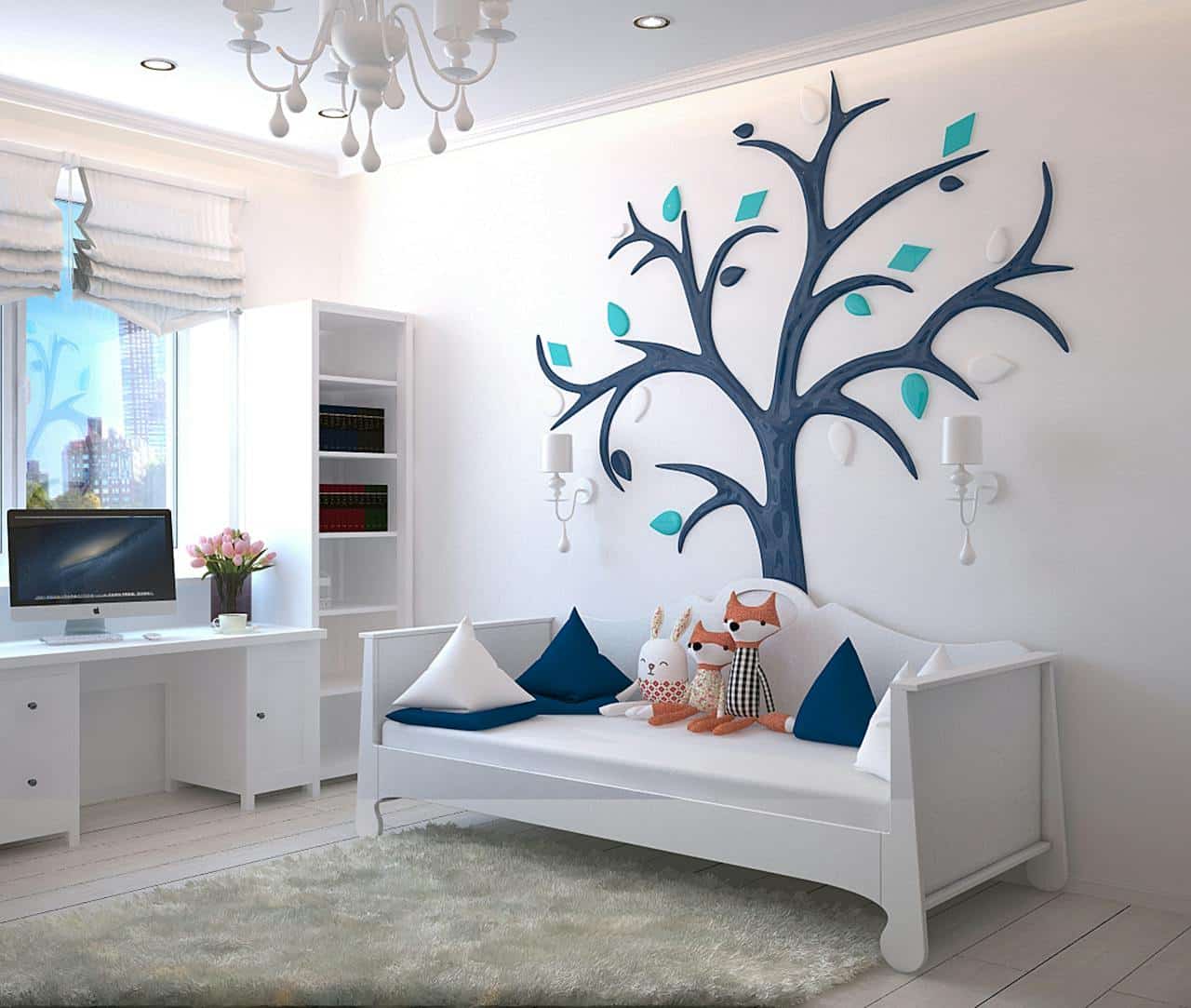The Significance of Engaging in Sensory Stimulations
Engaging in activities can greatly enhance the happiness and overall satisfaction of adults, with autism. These experiences are crafted to awaken the senses and encourage individuals to engage with their surroundings. In this discussion we will explore the significance of stimulation and the advantages of integration therapy.
The importance of experiences
Activities that engage the senses can vary in complexity. Are beneficial, for adults with autism enhancing their abilities. These interactive exercises play a role for individuals on the autism spectrum who frequently encounter challenges, in processing information.
Success Stories
“Move Up ABA has been a lifeline for our family. Before starting therapy, our son struggled with daily routines and communication. Now, he’s more independent and even initiated a conversation with a classmate for the first time! The progress we’ve seen in just six months is truly remarkable.”
- Emily R., Silver Spring, Accountant
“As a single dad, I was overwhelmed trying to manage my child’s behavior. The Move Up ABA team not only provided amazing support for my little girl but also taught me practical strategies to use at home. Their in-home sessions fit perfectly with our busy schedule. I’m so grateful for their patience and expertise.”
- Michael T., Rockville, Middle School Teacher
“We were hesitant about starting ABA therapy, but Move Up ABA’s approach put us at ease from day one. Our twins have made incredible strides in their social skills and self-regulation. The therapists are like extended family now, and we couldn’t be happier with our decision to work with them.”
- Aisha and James L., Simpson, Police Officers
Ready to start your child's journey to success? Schedule a free consultation today! 📞 Call (410) 497-8865.
Sensory processing disorder (SPD) and autism spectrum disorder (ASD) often share characteristics. Some individuals may have heightened sensitivity to stimuli impacting their perception of the world and emotional regulation.
Engaging in certain activities can reduce the chance of overwhelming these individuals and improve their skills to regulate their emotions.
These activities involve stimulating the senses, such as taste, smell, sight, hearing, touch, and proprioception, aiding individuals in understanding and engaging with their surroundings effectively. Participating in these experiences can provide comfort, reduce stress levels, and promote behaviors.
Benefits of Sensory Integration Therapy

Thanks to the media and several celebrities, including Kanye West, Eminem, Ed Sheeran, Mark Zuckerberg, and others, the topic of neurodivergence is now an open concept the public discusses. Therapies are getting better by the day since the public now has an interest in ensuring that neurodivergent people receive what they need. This includes sensory integration therapy.
Sensory integration therapy helps individuals with autism manage processing difficulties by improving their ability to process and respond to sensory information. Through targeted activities, it enhances sensory modulation, attention, motor coordination, and self-regulation, helping them interact more effectively with their environment and others.
Whether through relaxing activities, communication-focused exercises, or enjoyable hobbies, these sensory experiences can enrich the lives of adults with autism.
Calming Sensory Activities for Autistic adults
Engaging in activities is essential for creating a comforting atmosphere for adults with autism. Such activities aid in alleviating stress and encouraging a sense of calmness. This segment delves into two activities that promote relaxation: Applying deep pressure touch and incorporating music and sound.
Deep Touch Pressure Stimulation
Deep touch pressure stimulation has been discovered to have a soothing impact on adults with autism, easing their anxiety. This sensory practice involves administering gentle pressure to the body. It can be achieved through approaches including;
1. Blankets
Research indicates that weighted blankets can notably decrease anxiety levels in individuals with autism. In a 2008 study, 63% of participants reported anxiety after using a blanket, with 78% finding it to be a preferred calming tool. The comforting and secure feeling generated by the pressure of the weighted blanket promotes relaxation.
2. Compression clothing
Utilizing compression clothing like compression shirts or vests can offer deep pressure stimulation throughout the day. These garments apply pressure to the body, calming and reducing anxiety levels. Compression clothing can be discreetly worn under attire.
3. Massage therapy
Delicate massages stimulate touch pressure, assisting muscle relaxation and mental calmness. Massage techniques can be customized based on preferences and sensitivities. It’s crucial to seek guidance from a certified therapist to ensure that the massage meets the individual’s needs.
Music and Sound Activities

Engaging in activities incorporating music or sound can benefit adults with autism, aiding them in expressing themselves through rhythm, tone, and melody. Here are some soothing music and sound-based activities;
1. Enjoy calming music:
Soft, mellow tunes can establish an ambiance and help alleviate stress, anxiety, and sensory overload. Trying out music genres and styles can help identify what resonates best with a person’s preferences. Using headphones or earphones can enhance the listening experience.
2. Vocalizing through singing or humming:
Encouraging individuals with autism to participate in vocalization activities like singing, humming, or vocal improvisation can serve as a calming exercise. It provides an outlet for self-expression and aids in regulation.
3. Exploring meditation:
Engaging in guided meditations or experiencing baths involving soothing sounds or vibrations from instruments such as singing bowls or chimes can foster relaxation and an inner sense of peace. These practices can be undertaken individually or within a group setting.
4. Hosting dance parties:
Dance as an activity for autistic adults enhances listening skills, coordination, and rhythmic abilities. Whether enjoyed solo or within a group environment, dance parties offer a space for participation and enjoyment.
5. Engaging in emotional expression:
Expressing one’s emotions can boost self-esteem and confidence. Expressing troubles and problems allows one to organize and understand one’s emotions. This can be done through verbally expressing it to another person, like a friend, family or therapist, or it can be done non-verbally like writing on a journal.
These activities should be customized to suit likes and sensitivities, ensuring a pleasant experience. Pay attention to the individual’s reactions. Modify the activities as needed to offer a beneficial sensory experience that promotes calmness.
Enhancing Communication Skills in Sensory Activities for Autistic Adults
Engaging in experiences is vital for improving communication skills in adults with autism. These activities enable individuals to convey their thoughts and enhance their capabilities. There are two areas of communication growth facilitated by activities: articulating language and expanding descriptive vocabulary.
Articulating Language
Activities help autistic adults improve their ability to describe things. By experiencing stimuli, individuals are prompted to find words that accurately portray their sensory encounters. For example, when engaging in play with textures, people can learn to explain the contrasts between smooth, rough, soft, or hard sensations. This process aids in expanding their language and allows them to express themselves more precisely.
Expanding Vocabulary
Sensory activities involving auditory or tactile stimulation offer autistic adults chances to explore and depict the qualities of sensory inputs. This development of vocabulary can greatly enhance their capacity to convey their experiences to others, fostering better understanding and connection.
By integrating activities into routines, autistic adults can further improve their communication skills. These activities establish a nurturing environment where individuals feel comfortable expressing themselves, honing their language skills, and refining their ability to describe things effectively. Like all activities, it’s crucial to customize them according to each individual’s preferences and requirements.
Engaging Sensory Activities
Gardening for Tactile Experiences
Engaging in gardening offers a range of tactile experiences, making it an enjoyable and therapeutic choice for adults with autism. Individuals can explore textures and enhance their sensory skills by digging in the soil, planting seeds, and tending to plants. Gardening also fosters life skills such as responsibility and patience.
Getting your hands dirty allows you to feel the earth beneath your fingers, touch plant textures, and witness the growth as you nurture your garden. Whether you have an indoor herb garden or a spacious outdoor plot, gardening provides a rewarding sensory journey. To discover activities tailored for adults, be sure to explore our article on activities for autistic adults.
Artistic Activities for Expression
Engaging in art-related pursuits offers adults with autism a way to express themselves creatively, delve into their side, and immerse themselves in experiences. Activities like painting with fingers, molding clay, or crafting collages open up avenues to play with colors, textures, and materials. These endeavors activate the senses and encourage self-expression and emotional well-being.
Finger painting lets individuals feel the paint on their hands while experimenting with brushstrokes and designs. Working with clay involves tactile sensations and allows for the creation of three shapes. Assembling collages entails choosing and arranging materials for a sensory engagement.

Participating in endeavors can nurture self-confidence, enhance self-worth, and refine motor abilities. Creating an inclusive space where individuals can freely express themselves and nurture their creativity is crucial. Offering a variety of art supplies, textures, and tools tailored to preferences and sensory requirements is key. For inspiration on games and activities, you may also want to explore options games for autistic adults.
By incorporating engaging sensory activities like gardening and artistic endeavors, autistic adults can enjoy meaningful experiences that promote self-expression, relaxation, and sensory exploration. These activities provide opportunities to engage with different textures, materials, and sensations, positively impacting their well-being and quality of life.
Sensory Activities for Autistic Teens
Teenagers with autism can greatly benefit from participating in activities that address their sensory sensitivities and offer chances for exploration and self-expression. These activities help promote relaxation, improve communication skills, and create a sense of enjoyment. Two common sensory activities that teenagers enjoy include playing with bubbles and engaging with light-based experiences.
Bubble Play and Sensory Activities autistic adults
Blowing bubbles can bring joy to teenagers, with autism offering an adventure. Watching the colors and sizes of the bubbles, feeling them burst, and playing bubble-catching games can create an interactive pastime. Using bubble wands in shapes and sizes can enhance the experience by encouraging experimentation and imagination.
Engaging in endeavors such as finger painting and working with clay can also benefit autistic teenagers. These activities provide tactile stimulation and allow for self-expression through a variety of textures and materials. By making art, teenagers with autism can nurture their creativity, develop motor skills, and explore experiences.
Light-Based Sensory Engagement
Creating Sensory-Friendly Environments
Creating sensory-friendly spaces is of utmost importance when providing a supportive and inclusive environment for individuals with autism. Sensory-friendly environments help individuals with autism feel more comfortable and engaged, allowing them to navigate their surroundings better. This section will explore the significance of sensory-friendly spaces and strategies for sensory room design.
Importance of Sensory-Friendly Spaces
Sensory rooms, also known as calming spaces, have become popular in settings, medical facilities, and community hubs due to their ability to offer a controlled environment that caters to the sensory needs of individuals facing sensory processing challenges. These designed spaces aim to adjust the surroundings, diminish overload, and establish a secure area for self-regulation.

Studies indicate that sensory rooms effectively alleviate stress, reduce behaviors, and manage actions in teenagers and adults with sensory processing difficulties. Moreover, these rooms enhance concentration. Assist individuals in their tasks.
By creating an environment for individuals with autism spectrum disorder (ASD), numerous advantages can be observed;
Decreased anxiety and stress levels
Improved self-regulation and emotional well-being.
- Enhanced focus and attention span
- Greater participation in activities
- Opportunities for exploring different senses
- Guidelines for Designing Sensory Spaces
Designing an adequate sensory room.
Necessitates careful attention to multiple aspects. Here are some key strategies to consider when developing a space that’s conducive to needs;
Lighting
Choose lighting to establish a peaceful ambiance. Avoid harsh and overwhelming lights.
Color Palette
Choose soft hues for walls and furnishings to create an atmosphere.
Avoid using bold colors that could lead to overwhelming the senses.
Sensory Walls
Integrate walls into the room design. These walls can be adorned with various materials, like textured fabrics, mirrors, and tactile elements, to create soothing images or collages that promote comfort and tranquility for individuals.
Flooring

Opt for cushioned flooring to offer a secure area for individuals to participate in sensory activities.
Consider incorporating rugs or mats with textures for tactile stimulation.
Furniture and Seating
Provide a range of seating choices, such as bean bags, cushions, and rocking chairs, to cater to diverse sensory preferences and requirements. Weighted blankets and sensory toys can also be included to offer pressure and a feeling of safety.
Sound Management
Set up absorbing materials. Play soft background music to reduce external noise and establish a serene ambiance. Think about providing noise-canceling headphones or ear defenders for individuals to stimuli.
Adaptable Spaces
Design the room with flexibility in mind, allowing for the rearrangement of furniture and equipment. This empowers individuals to modify the space based on their needs and preferences.
Visual Aids
Display schedules, timers, and calming visuals to help individuals understand their tim0e in the room.
For suggestions on engaging activities tailored for adults, feel free to explore our resources on activities and games designed specifically for this community, board games, and jobs for autistic adults, and outdoor activities for autistic adults.






